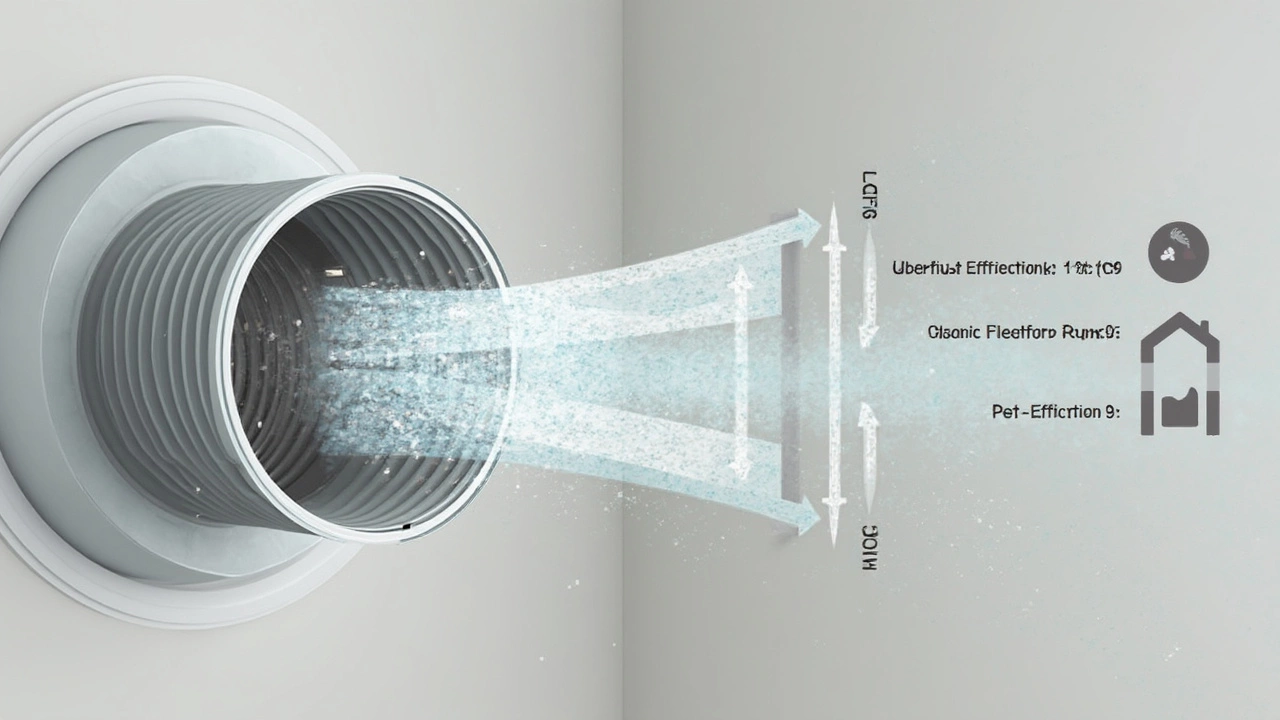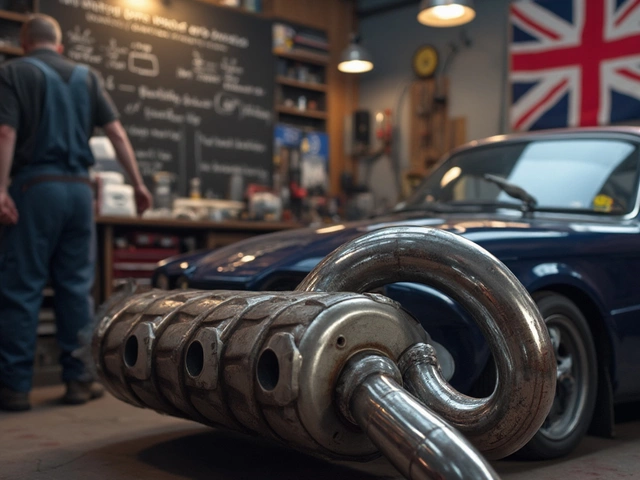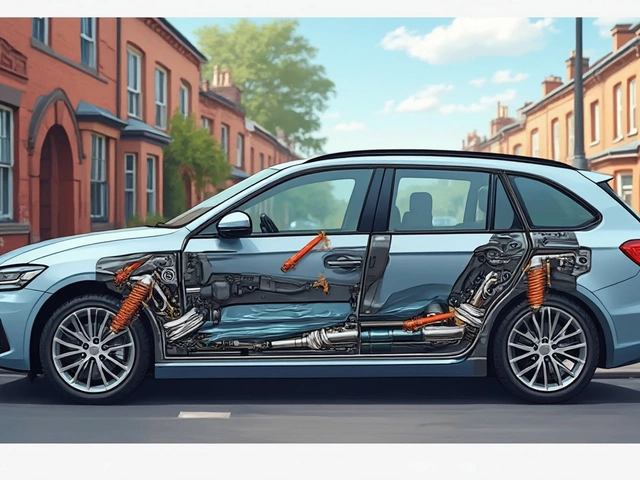Walk down any hardware store aisle and you’ll spot one type of HVAC filter everywhere: the flat, disposable fiberglass filter. These thin, white rectangles are cheap, easy to slip in and out, and they fit almost every furnace or air handler out there. It’s not random—they’re the most common filter for a reason.
But here’s something that surprises a lot of folks: just because fiberglass filters dominate the market, doesn’t mean they’re perfect for everyone. They’re the bare minimum when it comes to catching stuff floating in your air—mostly grabbing big dust, lint, and hair while letting smaller particles like pollen and smoke slip through. For most homes, though, that’s enough to keep the system clear and the air moving, without slowing airflow or making the HVAC work overtime.
- The Go-To HVAC Filter: What Everyone Uses
- Why This Filter Wins Out
- What to Watch for When Picking a Filter
- Keeping Your System—and Air—Healthy
The Go-To HVAC Filter: What Everyone Uses
Ask any HVAC tech which filter pops up the most, and they’ll point to the simple fiberglass air filter. It’s been around for decades and still tops the charts for both price and availability. But what makes it the go-to for so many homes?
Fiberglass filters are basically thin mats of spun glass fibers. You’ll usually find them in one-inch thick frames—sometimes blue, sometimes white. They slide in and out fast. Most brands stamp these as “disposable”—because you just toss them out when they’re dirty, rather than trying to clean or vacuum them.
Here’s why the HVAC filters market keeps them in the lead:
- Price: A basic fiberglass filter can sell for less than $2. That’s hard to beat when you’re changing filters every 1-3 months.
- Compatibility: They come in a bunch of sizes, so odds are, there’s one that fits your furnace or AC.
- Low airflow resistance: Because they’re not packed tight, they let plenty of air pass through. That keeps the HVAC blower from struggling, and helps with energy efficiency on systems designed for basic filtration.
But there’s a catch—fiberglass filters aren’t the best at capturing really tiny stuff. They focus on catching bigger particles, like dust, hair, and lint, rather than allergens or bacteria. If you’re curious how they stack up, check out this quick table:
| Filter Type | Average Particle Capture | Cost (per filter) | Replacement Frequency |
|---|---|---|---|
| Fiberglass | 30-50% of large particles (over 10 microns) | $1 - $3 | Every 30 days |
| Pleated (for comparison) | 70-90% of medium particles (3-10 microns) | $7 - $15 | Every 60-90 days |
Want to spot a fiberglass filter? Look for a see-through mesh, usually inside a cardboard frame. No fancy pleats or heavy construction—just the basics that get the job done in most setups. Unless your home has major allergy needs or you’re chasing cleaner air, this type usually covers the bases for basic protection and keeping your HVAC humming along.
Why This Filter Wins Out
So why do so many people reach for fiberglass filters over all the other options? First off, they win on price. You usually pay just a few bucks for each one—sometimes less if you buy in packs. If you’re replacing filters every few months (which you should), that matters. This low cost makes it easy for folks to stay on top of filter changes without breaking the bank.
Another big reason: airflow. Fiberglass filters don’t choke your HVAC system. Because they’re less dense than their pleated or HEPA cousins, the air keeps moving smoothly, which means your system doesn’t have to work as hard. This can keep your monthly energy bills in check and lower wear on your furnace or AC.
Change-outs are also simple. You don’t need special tools or instructions. Just slide the old one out and slide a new one in. Done in under a minute.
- Super affordable—costs less than most coffee shop runs
- Protects the system from big debris (hair, dust, pet fur)
- Easy for anyone to swap out
- Doesn’t hurt system airflow or efficiency
| Filter Type | Price (Approx.) | MERV Rating | Airflow Restriction |
|---|---|---|---|
| Fiberglass | $2 - $4 | 1-4 | Low |
| Pleated | $6 - $12 | 6-13 | Moderate |
| HEPA | $50+ | 16+ | High |
While fiberglass won’t stop tiny allergens or smoke, for most homes without heavy allergy needs, it does the job. It’s no wonder most hardware stores have entire shelves stacked with these things. For basic needs and tight budgets, HVAC filters made of fiberglass are the crowd favorite—purely because they make home maintenance a breeze.

What to Watch for When Picking a Filter
Picking the right filter isn’t just about grabbing the first pack off the shelf. Filters matter for your home’s air and your system’s health. You’ll want to look at three main things: size, MERV rating, and what’s actually in your air.
The size comes first—use the one your HVAC says to use. Too small, and air (plus dust) slips around it, messing up your system. Too big, and it just won’t fit. Check the specs, often printed right on your old filter or inside the filter slot.
MERV rating is a number that tells you how well a filter traps stuff. Most home systems work best with something in the 6-8 range. Go too high (like a 13+), and your system can start coughing and choking because the air can’t get through as easily. But if allergies or pets are a problem, stepping up to a pleated filter with a higher MERV can help, as long as your system’s up for it.
| MERV Rating | Traps... | Best For |
|---|---|---|
| 1-4 | Pollen, dust mites | Basic dust prevention |
| 5-8 | Mold spores, pet dander | Most homes |
| 9-12 | Auto fumes, fine dust | Allergy sufferers |
| 13-16 | Bacteria, smoke, sneeze droplets | Medical or extreme needs |
Another tip: stick with HVAC filters from brands with clear labels, so you know what you’re buying. Watch out for hype—some filters promise super air quality but might clog easily or barely let air move. If you go for a thick, high-rated filter, check that your system can handle it (your manual will say, or ask a tech).
- Replace filters every 1-3 months (more often with pets or heavy use).
- If indoor air feels stuffy or the system keeps flipping off, check the filter first.
- If in doubt, snap a photo of your old filter’s numbers before heading to the store.
Picking the right filter helps your system work smoother, your bills stay lower, and keeps the air better for everyone inside.
Keeping Your System—and Air—Healthy
Look, even the best HVAC filters need a little help to do their job right. Letting a filter sit clogged for months doesn’t just mess with your air quality—it can also jack up your energy bill. A dirty filter forces your system to work harder, which eats up more power and wears down the motor. The Department of Energy actually says replacing a dirty air filter with a clean one can lower your air conditioner’s energy use by 5% to 15%.
Want your home’s air to stay fresher and your system to last longer? Check your filter every month. It’s quick—just pop the front panel and peek at the filter. If it looks gray and packed with dust, swap it out. For most homes, plan on a change every 30 to 90 days, but if you’ve got pets, smokers, or allergy issues, you might want to do it more often.
Here's a simple guide:
- Mark your calendar for monthly checks.
- If your filter is visibly dirty or you notice less airflow, switch it out even sooner.
- Always follow the size and type your HVAC unit recommends. Going too thick can choke the airflow, and too thin won’t catch enough dust.
Thinking about air quality? Don’t ignore things like humidity and ventilation. A good filter helps, but using a humidifier or opening windows when the weather’s nice gives dust and allergens fewer places to lurk.
Check out these stats on filter maintenance and its impact:
| Action | Result |
|---|---|
| Replace filter every 2-3 months | Up to 15% better HVAC efficiency |
| Forget to replace filter | System life drops by ~5 years* |
| Use higher quality filter (MERV 8+) | Removes more allergens |
| Clogged filter left in | Double risk of breakdowns |
*Based on average residential HVAC system lifespan estimates.
Stay on top of filter changes, and you’ll breathe easier—literally and financially.






